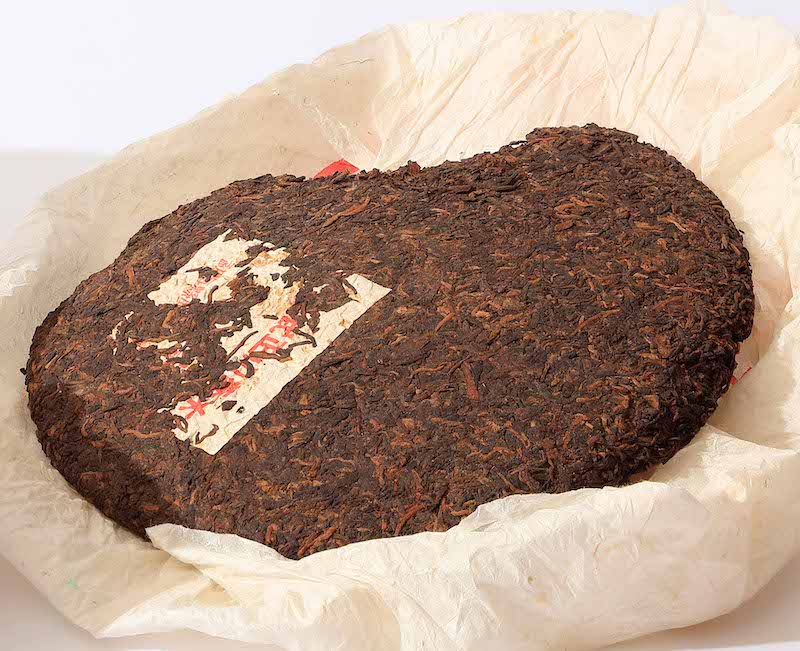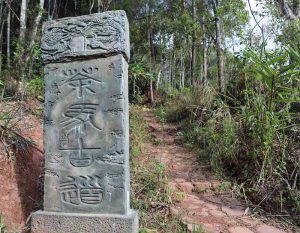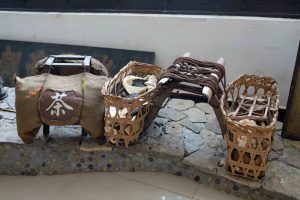MENU
MENU

抽出液.jpg)
Dark tea
East Asia
Yunnan Qizi bing cake tea 雲南七子餅茶 (China)
Tea is classified into six categories: green tea, white tea, yellow tea, blue tea (oolong tea), black tea, and dark tea. This site introduces the various teas that CHAMART has sampled.
Dark tea
Post-fermented tea
Ripe Pu’er tea 普洱熟茶 (Pu’er shu cha):
There are 2 types of Pu’er tea which are ripe tea and raw tea. Ripe tea refers to artificially fermented tea leaves, while raw tea is where the tea leaves are naturally fermented over time. It is said that Pu’er tea tastes better if left to mature, and some vintage Pu’er tea is very expensive, so the tea is treated as a living antique or an item of cultural property
雲南七子餅茶 (Yunnan qizi cha bing cha) means literally “seven units cake tea”.
Cake tea (Bingcha 餅茶) is a round and flat shape, and the tea leaves are solid and hardened into a round and flat shape. The name originates in the custom of 七子餅茶 wrapping 7 pieces of cake tea in bamboo skin for storage. The standard weight is 375g and the diameter is 20cm. The number of pieces and the size were decided for transporting by horse on the ancient Tea Huse Road.
Production area: Yunnan Province, China
Flavor: It smells moldy and has a unique scent like soil. However, the taste is rich with a distinctive Pu’er bitter and deep flavor. This tea gets darker and more mature over time.
If tasting it carefully, you can detect a slight sweetness.
How to brew:
1. Shave cake tea with a tea knife to get some tea leaves (3 to 5g). Place in a teapot.
2. Pour hot water into the teapot, and then pour the hot water into a teacup from the teapot.
3. Throw the hot water away from the cup. The storage period of Pu’er ripe tea is long. Thus, it is better to throw away the first cup of tea to wash the tea leaves.
4. Put the tea leaves into the teapot and add fresh hot water into the teapot. Pour the brewed tea into a cup.
Brew the tea for several seconds to 1 minute according to your taste.
茶葉と抽出液-300x184.jpg)

To make cake tea, tea leaves are wrapped in a cloth, and a stone weight is placed on the top of them. Then, a tea maker mounts the stone and uses it to form the tea into the shape of a disk by foot.
There are many stone weights at this tea farmer’s house in Nakeli Village.

Nakeli Village, Tongxin, Ning’er Hani and Yi Autonomous County, Pu’er City, Yunnan Province, China (December 2019)
The Ancient Tea Horse Road and the size of cake tea
Since the 8th century of the Tang Dynasty, there has been a trade in tea from southwest China and horses from Xinjiang Uighur district in the western region of China. Then, the trade expanded into Tibet, and Tibetan horses were exchanged for tea.
The trade route was called the Tea Horse Road.
People carrying heavy loads traveled from Yunnan to Tibet with horses carrying tea leaves on narrow loads of steep mountains. It was a tough journey. During the journey, people and horses sometimes lost their lives.
The shape, weight and size of the cake tea were determined for carrying the tea by a horse.
A horse can carry a load with a weight of 60 kg in a day. 1 piece of cake tea is 357g and 7 pieces were wrapped with bamboo skin. A horse carried 12 packs each on its back on both sides. The total weight of 24 packs is 60kg.
The trade continued until the 20th century.

Tea Horse Road in Pu’er City, Yunnan Province (December 2019)
The baskets on horseback for carrying cake tea are exhibited at the China Pu’er Tea Museum.

China Pu’er tea museum (December 2019)
Related article on the site: “Tea of China“
Reference:
工藤佳治、兪向紅 著 中国茶図鑑(2017) 第6版発行 文春新書
工藤佳治主編者(2007) 中国茶事典(初版) 勉誠出版
国際共同制作NHK/KBS(韓国) 茶馬古道 もう一つのシルクロード NHKエンタープライズ 2009
*The site does not describe all “Teas of Japan” or all “Teas of the World”. Additionally, each article expresses the writer’s personal experience and feelings.
*The information provided on this site may be updated. If you find any information in this article that is incorrect, new, or incomplete, please contact CHAMART.